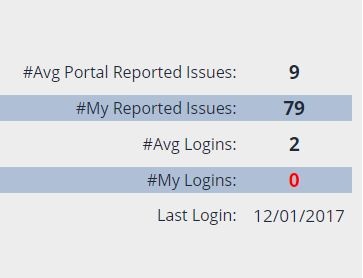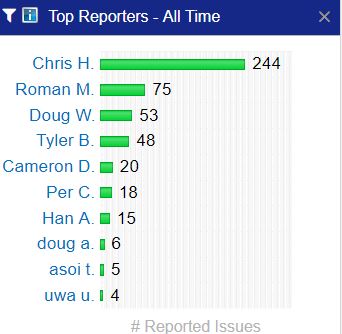What Is Employee Safety Performance?

Roughly four out of every five aviation safety programs struggle with employee involvement. In many ways, the struggle is linked to the economics of SMS.
“Economics of SMS” is simply another way of saying that incentives play a crucial role in employee safety performance.
When employees feel and can see that someone is watching their safety performance – in other words, that their performance matters – they will usually shift their behavior to comply with expectations. Why?
- Employees don’t want to lose their jobs;
- Employees want pay raises; and
- Employees don’t want to be the black sheep.
When there are stakes for safety performance, it motivates employees in these important areas. If an employee knows that reporting or not reporting will affect their ability to receive a promotion or get a bump in pay, they tend to make choices that benefit the SMS.
Charts to monitor employee safety performance in SMS are one of the most effective ways to promote positive motivation. They are accessible, visual, and clearly demonstrate that safety performance matters.
Number of Issues Reported vs Average

Being able to see how many issues individual employees are reporting is a powerful way to assess whether or not they are meeting the expectations of your safety program.
Furthermore, when you can compare individual reporting performance against the company average, you additionally gain the ability to assess whether or not:
- Employee is reaching safety expectations but is below average; and
- Company average reporting performance is meeting safety expectations.
If employees know that their reporting performance is being monitored, they have a strong incentive to make sure they are reaching expectations. Additionally, for underperforming employees, you have an opportunity to interface with them and encourage stronger reporting habits.
Top Reporters in Company

The top reporters' chart is a great chart to see which employees are most involved in your data acquisition process, which is the foundation of your risk management process. Top reporters charts can be:
- top reporters of all time; and
- Top reporters recently (such as a current month).
This kind of chart shows you:
- Who the leaders of hazard reporting are in your company; and
- Indirectly, who is NOT performing at the top level of performance.
This chart gives incentives in your SMS program when other employees can see top performers.
- Having a ranking system encourages reporting “competition” (to be high on the list); and
- Having this chart in regular view subtly communicates the fact that their involvement (or lack of) does not go without notice.
These incentives especially prove true if management takes care to draw attention to the chart, such as in a newsletter or by rewarding top reporters.
On-Time Issue Closure Performance

Knowing manager performance for closing assigned issues on time is absolutely essential to their safety performance. For managers who are regularly assigned issues to manage, on-time performance is their most important performance metric.
This chart lets you monitor employee safety performance at the individual level. This safety chart displays:
- Each manager who is assigned safety issues;
- Data points for each month that the manager was assigned issues; and
- The percent of issues each manager closed on time, per month.
When a manager is consistently closing their assigned issues late, it shows:
- Poor management oversight;
- Poor process for managing issues; or
- Poor performance of individual manager(s).
Any three of these points can lead to significant problems in your safety management system. This chart helps you monitor each manager's performance, where you can identify negative trends and address them before they become significant problems.
On-Time Assigned Corrective Action Performance

Corrective preventative actions are used to implement the changes that drive continuous improvement in your SMS program. Closing CPAs on time ensures that your SMS is:
- Adaptable;
- Responsive; and
- Performant.
Furthermore, being transparent with employees about the fact that their CPA on-time performance is being monitored sends the clear message that safety performance is a natural part of general job duties.
Top Human Factors
Human Factors are the attitudes and behaviors that affect outcomes in your program. However, not all Human Factors are created equal. Some factors are:
- Incidental/accidental, such as fatigue; whereas others are
- Intentional, such as Norms or Pressure.
Being able to see top Human Factors allows you to assess what type of behaviors are driving your performance. Are the behaviors driving negative outcomes more accidental or more intentional? The answer to that question will help you assess whether or not negative incidents are driven by poor performance (intentional negative behavior).
Related Aviation Human Factors Articles
- Which Topics for Aviation Maintenance Human Factors Training?
- What the SMS Human Factor Lack of Awareness Is (With Free Newsletter Resource)
- How Human Factors in Aviation SMS Should Be Viewed
Meeting Attendance Percentage

Research shows the dramatic correlation between meeting frequency and safety performance. Employees should be involved in safety meetings. The ideal scenario is that attendance in such meetings is tracked.
Tracking this data sends a couple of important messages to employees.
- Involvement is important;
- Safety information is important; and
- Teamwork is important.
Here is a great resource that will help you continue to build safety performance monitoring processes in your SMS.
Last updated December 2025.





